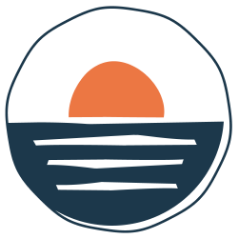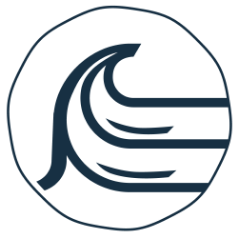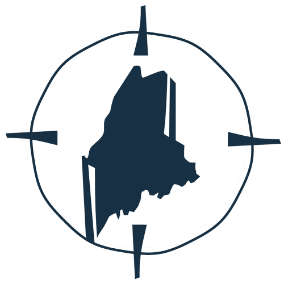SEA Maine Roadmap
Published March 1, 2024
Building on all of the SEA Maine reports and studies and referencing key statewide strategic plans such as the Maine Economic Development Strategy 2020 – 2029, Maine Won’t Wait, and the Maine Aquaculture Roadmap, the SEA Maine Roadmap outlines five high-level economic development goals and related actions in the areas of infrastructure, sustainability, and resilience; economic impact; workforce; and marketing/market development.
Global Opportunities Assessment
Published December 19, 2023
This report is a comprehensive assessment of opportunities that support the long-term sustainability of Maine’s marine living resource sector. It profiles the essence of each major opportunity, including the resources needed, benefits of implementation, timelines, and key information sources that will help galvanize partners to move these opportunities forward.
Cambodian Seafood Purchase Intent Study
Published November 27, 2023
Goal: To sample Maine seafood (specifically grey sole/witch flounder and small dabs/American plaice) at the Lowell Southeast Asian Water Festival in Summer 2023 to determine purchase intent and pattern while better understanding consumer behavior related to seafood purchase in key multicultural segments.
Maine Seafood Market Report
Published November 9, 2023
The Maine Seafood Market Report offers valuable insights into consumer trends and the current seafood market in the U.S. including:
- An in-depth data analysis on eight targeted Maine species (lobster, mussels, scallops, oysters, clams, crab, flounder/sole, and pollock) using NielsenIQ syndicated data for the grocery and retail channels and Circana for the foodservice (hotel/restaurant/institutional) channel.
- A special section on market trends in seaweed, a growing aquaculture sector in Maine, using NielsenIQ category data which includes products with seaweed listed as an ingredient.
Workforce Education & Training Capacity-Building Grants
Published October 17, 2023
In 2022-23, SEA Maine’s workforce committee accepted grant proposals to support Maine’s seafood economy by building capacity for creating new (or adding value to) workforce curriculum and training programs. Proposals were focused on attracting new and/or young talent to the sector. The awards, provided through the US EDA, supported a variety of projects and allowed grantees to take risks and test new models and approaches.
Workforce Needs Assessment (Phase II)
Published September 11, 2023
This analysis builds off earlier work to better account for the occupation families that make up the MLR economy, a sector that both encompasses and expands upon traditional North American Industry Classification System (NAICS) industry classification schema. In the pages that follow, this newly developed classification scheme is applied to an analysis of the current workforce needs of the industry. Following a brief overview of the population, general labor force trends, and the state of housing in Maine, the report estimates the skills gap between the workers the industry will need and the current pipelines of talent, the economic impact the industry has on the state of Maine, and a summary of the themes that emerged through one-on-on conversations with industry employers. It concludes with suggested strategies and opportunities to address current, and potentially future, gaps in the employment needs of the industry vis-à-vis the pool of available and interested potential workers.
Workforce Toolboxes
Published June 28, 2023
These three toolboxes address the following workforce challenges:
- Recruitment, talent attraction, and retention: Examining careers in Maine’s seafood economy
- Education and training: Learning skills for Maine’s seafood economy
- Best practices: Sharing statewide and national knowledge
Marine Living Resources Transportation and Logistics Dashboard
Published April 21, 2023
This interactive mapping dashboard helps to visualize the seasonal distribution of marine harvests in Maine as well as the location of seafood dealers across the state. The dashboard includes a tool to calculate the nearest dealers for each port and the nearest ports for each dealer, as well as the driving time to the Araho Transfer facility in Boston, MA (a key seafood market of the northeastern seaboard where all products travel for further distribution).
Marine Living Resource Needs and Opportunities in Transportation and Logistics Report
Published April 21, 2023
One of the major obstacles in the seafood industry is the highly perishable nature of its product. This poses challenges for Maine with its approximately 3,500 miles of coastline from New Hampshire to New Brunswick. While innovative technologies to increase the shelf-life of seafood products continue to become more available and are adopted by larger companies, small harvesters feel the challenge of bringing their product to market faster. Additionally, as a state of small harvesters, Maine has faced an uphill battle to bring fresh seafood to market in a competitive timeline. While some larger dealers use privately owned and operated refrigerated trucking services, commercial carriers remain limited. For smaller dealers, the size of their haul makes it difficult to find an economically and logistically viable solution to transport their product to market. This study shows that members of the seafood industry expressed a desire for a solution such as a trucking cooperative in Maine, especially one designed to serve smaller harvesters and dealers.
The Economic Impacts of the Maine Seafood Sector
Published February 21, 2023
This analysis utilizes the best available data from the Maine Departments of Marine Resources and Labor together with the IMPLAN economic model to estimate the total (direct, indirect, and induced) economic impacts of the commercial seafood sector and core value chain components on the state of Maine and substate regions. The analysis is intended to serve as a baseline indicator from which to compare impacts in future years, as well as to evaluate the impact of specific investments or initiatives on the growth of the sector over time.
*This report shows the size and scope of the full seafood sector. Challenges in determining the size of specific harvest methods and species within this sector were highlighted and not attainable with current reporting and measurement tools. The result is calculations that should be only seen as what they are; estimates.
Marine Resource Residuals in Maine
Published February 15th, 2023
Extracting maximum value from marine resources includes full utilization of residuals, and it is critical to know where, how much and what type of residuals are being produced. This report examines the current state of marine resource residuals and considerations going forward that will help to engage private and public sector actors in gaining the full potential of marine resource residuals for the benefit of Maine’s economy. An online map of estimated residuals has been created to support spatial and logistical analysis for potential residuals processing opportunities.
A Seafood Promotional Council for Maine
Published November 16th, 2022
This report considers whether a Seafood Promotional Council that focuses primarily on non-lobster species would be advantageous for Maine and whether there is industry support for such an initiative.
Multicultural Marketing Analysis - Cambodian and Vietnamese Seafood
Published November 16th, 2022
Maine’s seafood is not effectively marketed to Asian communities, which consume far more seafood than other ethnic communities. Developing Maine’s Vietnamese and Cambodian markets could, in turn, influence communities throughout Massachusetts and beyond to visit Maine, dine at our seafood restaurants, shop at our seafood and fishmonger stores and buy Maine seafood. Our Vietnamese and Cambodian communities go to Massachusetts regularly and could be our ambassadors to almost 83,000 Cambodians and Vietnamese because these communities are connected through social media, cultural connections, families, and young people moving to Massachusetts for more opportunities. Selling to 83,000 Cambodians and Vietnamese that eat 92 to 83 pounds per person annually is like selling to 450,000 US consumers who average 16 pounds of seafood a year.
Maine's Seafood Baseline
Published June 2022
This benchmark report provides a detailed, accurate, and integrated understanding of the current baseline information of the seafood economy sector and demographic data. It identifies and assess existing and anticipated resource reports and datasets, identifies current gaps in resource analysis, and outlines capacity and targets for growth and economic impact.
Current State of Knowledge in Maine's Wild Catch Fisheries and Seafood Workforce (Phase 1)
Published April 6th, 2022
This study provides a basic understanding of the workforce conditions in the sector by collecting and synthesizing existing information and available data on the sector’s workforce with limited primary data collection through surveys, interviews, or other means. A complementary report prepared by the Gulf of Maine Research Institute (GMRI) titled Aquaculture Workforce Development Strategy provides a strong foundational understanding of the skill demands and workforce training supply in Maine for aquaculture operations, but does not directly account for other sector components, such as finfishing and to a lesser extent seafood processing and distribution. The analysis, findings, and recommendations in this report are primarily focused on wild-caught fisheries and processing and are intended to provide a more rounded picture of the workforce challenges and opportunities across the entire sector.
SEAMaine High Priority Recommendations Report to the Governor’s Economic Recovery Committee
Published September 4th, 2020
SEAMaine Short-term Recommendations Report to Governor’s Economy Recovery Committee
Published June 12, 2020
PRESENTATIONS
Submitted by the Co-Chairs of SEAMaine – Seafood Economic Accelerator for Maine (formerly MMERI); September 4, 2020
Submitted by the Co-Chairs of the Economic Development Administration’s Maine Marine Economy Roadmap Initiative (MMERI); June 12, 2020


